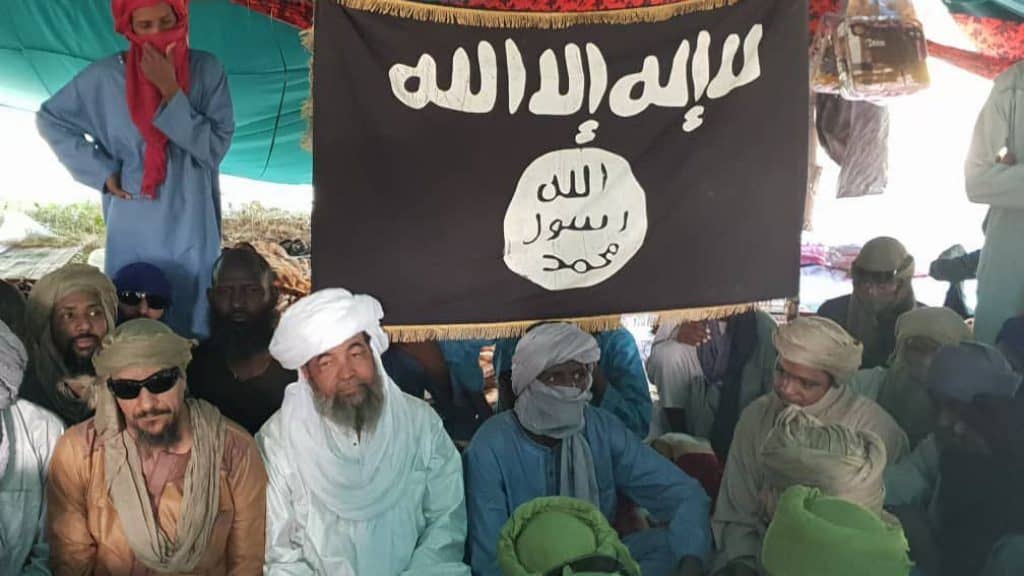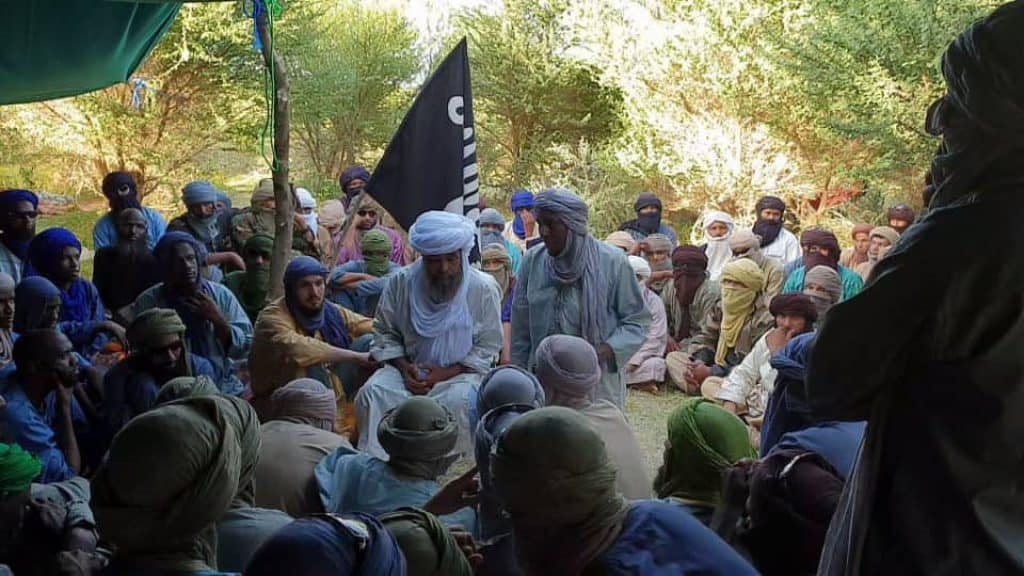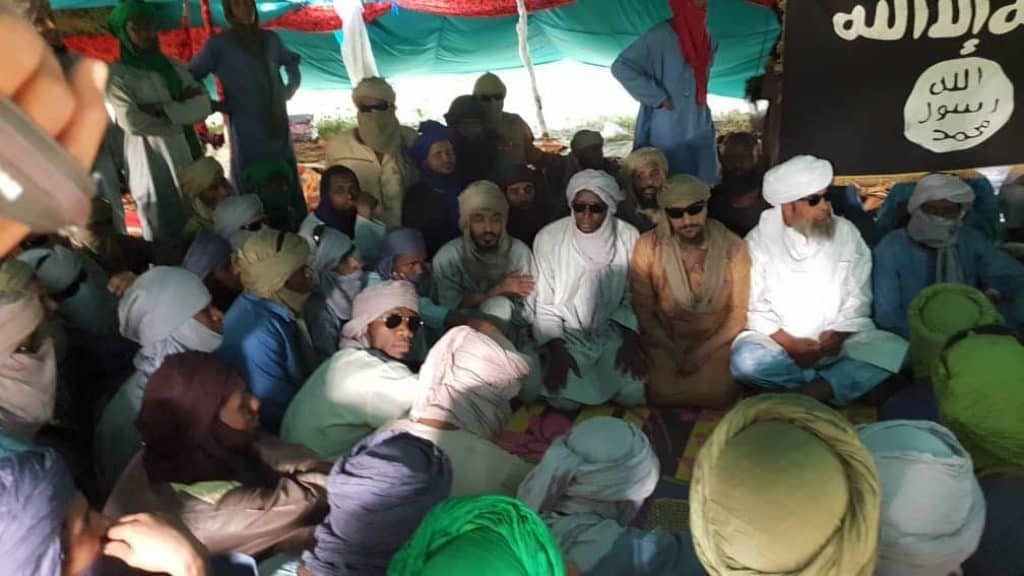
On Oct. 8, the Malian government confirmed that foreign hostages Sophie Petronin, a French aid worker, the Italians Nicola Ciacco and Pierluigi Maccali, as well as Malian opposition figure Soumalia Cisse were freed by al Qaeda’s Group for Support of Islam and Muslims (JNIM).
The liberation of the hostages came after the government of Mali freed close to 200 prisoners, mainly jihadists, in a prisoner swap deal. JNIM has since celebrated the event both online and with a large gathering in northern Mali.
Beginning on Oct. 4, rumors on Malian social media began to swirl of potential movements of prisoners to the country’s north. More reports, including from the Associated Press, then emerged of a possible deal that included the freeing of Cisse. More reports came a few days later that Petronin was also included in a prisoner swap deal.
Precise numbers of freed prisoners, however, have varied. Malian officials originally gave a number of 180 prisoners, while the jihadists themselves have said 206. Meanwhile, French outlets have reported 204 members were freed, seemingly confirming a higher number stated by the jihadists.
On social media, channels and accounts linked to JNIM began to post cryptic celebratory messages on Oct. 5. So far, only unofficial accounts linked or sympathetic to the jihadist group have commented on the swap.
JNIM itself has not yet released an official statement regarding the deal as of the time of publishing.
Nevertheless, the pro-JNIM accounts quickly began disseminating information that 206 imprisoned members were freed by Malian authorities. Following the official confirmation by the Malian government, these channels began to release photos of both the freed hostages and the prisoners who were flown to northern Mali.
One such photo released online shows the four hostages in northern Mali just before their release and flight back to Bamako. Embedded in the images was a statement purportedly attributed to JNIM celebrating the prisoner swap and congratulating its people in Mali and elsewhere for freeing imprisoned jihadists.
This was followed by photos released on Oct. 10, showing JNIM holding a huge gathering of its fighters and freed members somewhere in northern Mali. The jihadists can be seen meeting and congratulating each other with a huge feast, as well as praying with the freed members. Front and center of the event is JNIM’s overall emir, Iyad Ag Ghaly.
Two of the freed members that can be spotted in the photos are Aliou Mahamar Toure and Mahamoud Barry, as first reported by researcher Heni Nsaibia. Toure, the former “Islamic police chief” in Gao during the brief occupation of the city by the al Qaeda affiliate Movement for Oneness and Jihad in West Africa, was captured in late 2013.
Barry, who prior to his detention was a commander for JNIM’s Katibat Macina, was arrested in central Mali in July 2016. It was Barry who featured prominently in Katibat Macina’s first video production in 2016, where he was identified as “Sheikh Yahya.”
Some confusion has emerged over another potentially freed prisoner, Mimi Ould Baba Ould Cheikh. Ould Cheikh was the reported mastermind of the March 2016 terrorist attack in Grand Bassam, Ivory Coast, perpetrated by al Qaeda’s gunmen.
He was also connected to the January 2016 attack on a hotel in Burkina Faso’s capital Ouagadougou, which killed at least 30 people including one American. He was arrested in northern Mali in January 2017.
Ould Cheikh was initially slated to be freed by Malian officials as part of the prisoner swap, but American officials purportedly intervened to prevent this from occurring. It is unclear the current status of Ould Cheikh.
The prisoner swap comes after a sustained military campaign by JNIM to liberate its imprisoned members. For instance, between Nov. 2019 and Jan. 2020, JNIM conducted at least three attacks on prisons in Mali and Burkina Faso in attempts to free its members.
After the Nov. 2019 assault on the Dire prison south of Timbuktu, JNIM released a statement saying that “with this occasion we renew our promise with our imprisoned brothers and we say to them that we have not forgotten you and we will not forget you.”
This was later followed by a statement by al Qaeda’s central command congratulating JNIM on the operations and encouraging it to continue to free jihadists.
Hostages Freed
While only Cisse and Petronin were initially reported freed in the deal, the release of the two Italians were details that emerged later. This information came from the official confirmation of the deal by the Malian government on Oct. 8. A form released by Malian officials dated for Oct. 6, confirmed that all four hostages were freed that day.
The negotiations reportedly started earlier this year under former Malian President Ibrahim Boubacar Keita, according to French journalist Wassim Nasr. This process then continued with the current ruling junta and transitional government following the coup in Bamako in August.
Cisse, one of the main leaders of Mali’s political opposition, was captured by the jihadists in March while he was campaigning in the Timbuktu region of northern Mali.
Nicola Ciacco was kidnapped somewhere between Timbuktu and Douentza, Mali, in early 2019, while Pierluigi Maccali was taken in Niger’s Tillaberi region in Sept. 2018.
Petronin, who was held the longest of the freed hostages by JNIM, was kidnapped from Gao in Dec. 2016. Petronin was featured in a series of videos produced by JNIM throughout 2017 and 2018, in which the al Qaeda branch exploited her health conditions in an attempt to pressure France to negotiate for her release.
While JNIM released the three foreign hostages, it is still believed to be holding several other foreigners. This includes the Romanian Iulian Ghergut, who was kidnapped in northern Burkina Faso in April 2015; the Australian Ken Elliott, also taken from northern Burkina Faso in Jan. 2016; and the Colombian Gloria Navarez, kidnapped in the Sikasso region of southern Mali in Feb. 2017.
Beatrice Stockly, a Swiss missionary captured by al Qaeda in Timbuktu in Jan. 2016, was assumed still held by JNIM until the recent prisoner swap. Sophie Petronin, following her arrival in Bamako, informed French officials that Stockly had been executed by JNIM just last month. Swiss and French authorities have since confirmed Stockly’s death.
It should be noted that two other foreign hostages are also still believed to be held in the Sahel by JNIM’s rival, the Islamic State in the Greater Sahara (ISGS). For instance, ISGS is believed to be holding the American Jeffrey Woodke, who was kidnapped in Niger’s Tahoua region in Oct. 2016. The group is also widely suspected in the abduction of German national Jorg Lange from Ayorou, Niger, in April 2018.
In the past, hostage operations in the Sahara and Sahel were directly managed by al Qaeda’s senior leadership. For instance, in late 2010 the then-al Qaeda in the Islamic Maghreb (AQIM) emir, Abdelmalek Droukdel, told al-Jazeera that “any form of negotiations on this issue in the future will be done with no one other than our Sheikh Osama bin Laden… and according to his terms.”
Files recovered from Osama bin Laden’s compound in Abbottabad, Pakistan, have also confirmed this level of control. However, it is unknown if this dynamic with foreign hostages in the Sahel is still the case 10 years later. It is likely JNIM wields some autonomy in this regard.
Given the geographically diverse nature of al Qaeda’s global leadership, this distinction may not be as pronounced. Some AQIM leaders are believed to be within al Qaeda’s overall senior leadership. This includes Abdelmalek Droukdel who was believed to have also been within al Qaeda’s global management team.
This means that some of JNIM’s top leaders, like Iyad Ag Ghaly, may also be within al Qaeda’s ‘senior leadership’ given the group’s importance to al Qaeda’s current operations.
In negotiating with many European and regional governments, al Qaeda has netted millions of dollars in revenue by hostage-taking operations throughout the Sahara and Sahel. For example, AQIM is believed to have made almost $100 million in ransom money between 2008 and 2013.
Local journalists have indicated this recent deal in Mali is no exception, with JNIM possibly netting at least 10 million Euros in ransom money. If this payment is indeed confirmed, it is clear that hostage-taking operations remain a viable option for the al Qaeda branch.
Other photos released by JNIM-linked accounts from the group’s celebration in northern Mali:


Are you a dedicated reader of FDD's Long War Journal? Has our research benefitted you or your team over the years? Support our independent reporting and analysis today by considering a one-time or monthly donation. Thanks for reading! You can make a tax-deductible donation here.
from Long War Journal – FDD's Long War Journal https://ift.tt/2H03PnW
via Defense News
No comments: